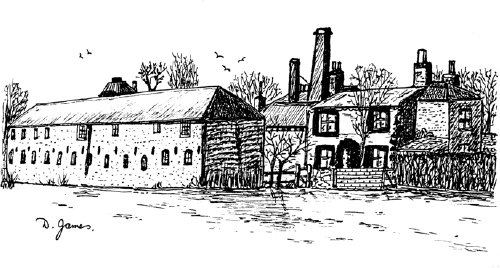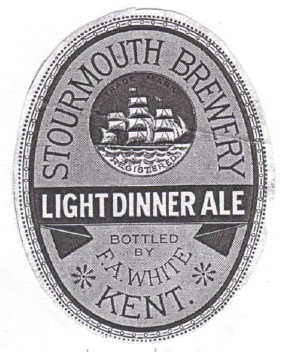
I was reading an old issue of Brewery History, the Journal of The Brewery History Society, which contains a cool article about the old Stourmouth Brewery by Rod Jones. Needless to say, it was located in Stourmouth, Nr Wingham, Canterbury, Kent in the mid-late 1800s. I was interested to learn, for instance, that Stourmouth East India Pale Ale was sent by rail to the sea, then sailed to Belgium.
Not India.
Wouldn't that make it a Belgian Pale Ale? No--I know that's not how the naming structure works--but it's still kinda odd, huh?

I was also struck by this paragraph:
I know very little about English geography, even less about the specific local topography, but woah! A well only 11 feet deep could supply a whole brewery with "excellent water"...producing enough ale for their 11 pubs and export trade? Is the water table really that close to the surface? If so, how are local building foundations anchored? A related morbid question: how do area cemetaries function?The final brewery owner, Major Francis A. White "brewed Pale Bitter Ale, X Mild, Porter, the noted East India Ale, Light Dinner Ale, Superior Dinner Beer, Cooper Beer, Double Stout & Pale Ales. The brewery was a 6 quart plant supplied by excellent water from an 11ft. deep well. This was pumped by windmill and, on less windy days, by steam engine. It had a 30-quarter malthouse, surrounded by White's 70 acres of farm land. Wheat, barley, oats and hops were all supplied by local growers. There were several linked cellars joining the different buildings. All have now caved in, but it is hoped that one day they will be restored. The two main unrivalled cellars (60ft in length - so long that about 40 years ago a man actually used to ride his bike down there just for fun), linked the Brewery and Old Brewery House to the long building (now demolished) that was used for the storage of full barrels of beer. The Drayman would then load up the horse drawn carts for delivery of the beers to their final destination."

